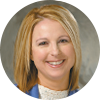The article informs the readers about who uses alternative medicine. It cites that 34% of Americans and 20% of the adult Canadian population have used alternative therapies.2,3 The journal Pediatrics published an article, "The Use of Alternative Medicine by Children," which showed that of 2,055 children attending a metropolitan pediatric clinic, 11% had seen one or more practitioners of alternative medicine at least once.4 The article considered this percentage in all probability as conservatively lower than the actual practice by the population.
Spigelblatt's article also attempts to profile the parents and present an explanation to her colleagues why the patient chooses alternative medicine as a part of their lifestyle. The following were reasons why parents choose alternative medicine:
- attracted to therapist recommended by family, friends or the local community;
- concerned about possible side effects of conventional therapies;
- seeking relief for chronic ailments that defy short-term solutions;
- fear conventional medicine and technology, and desire more personalized and holistic approach, influenced by ethnic and cultural background;
- believe alternative therapies are benign, effective and natural;
- seeking complementary treatment of a life-threatening illness;
- want to participate actively in treatment and alternative medicine readily available.5
Vincent and Furnham6 suggested that one reason why individuals choose alternative medicine is that they see it as a complement to conventional treatment. Vincent and Furnham see the trend not so much a sign of patient disillusionment with traditional medicine, as patients viewing medicine as an incomplete solution for their problems.6
Because chiropractic leads the category of most visited health professional outside of medicine at 36%, followed by homeopaths (25%), acupuncturists (11.5%) and naturopaths (11.5%), this article is consumed by concerns about our profession.4 Spigelblatt refers to chiropractic as "making them (chiropractors) the most frequently consulted therapists." The chiropractic profession's response should be, "Since when has a chiropractor become a therapist?"
Dr. Spigelblatt (an associate professor of pediatrics at the University of Montreal Hospital Malsonneuve-Rosemont in Montreal, Quebec) unfortunately misses even the accurate history of chiropractic's beginning by stating: "Chiropractic was first established as a discipline in the late 19th century by an American grocer turned healer." If my memory serves me correctly, D.D. Palmer was born and raised in Canada prior to establishing himself as the founder of our profession.
The chiropractic section of Dr. Spigelblatt's piece has its usual spattering of mistruths:
"Some chiropractors have attempted to treat conditions such as school phobia, unilateral kidney disease, cancer, and slipped femoral epiphysis, significantly delaying appropriate medical treatment.7
"No scientific studies offer convincing data for the effectiveness of treatment of childhood disorders with chiropractic, yet pediatric associations have remained strangely silent on its appropriateness."
Spigelblatt uses an old and misleading public statement made in 1994 by 13 Canadian pediatricians denouncing chiropractic care for children ("Orthoractic Declares WAR on Chiropractic Pediatrics," DC, Sept. 23, 1994). Unfortunately, she did not research the outcome of this political sham, which was openly denounced by the professional community and, not surprisingly, orchestrated by the master of "spin doctors," our chiropractic friend, Murray Katz.
The outcome of the Katz public announcement was an outcry from the Canadian and American chiropractic communities (national and provincial associations, newspapers, etc.). The heads of the pediatric departments who signed the announcement were further embarrassed once they realized who had authored the document.
Spigelblatt's topic of "worrisome issues" also included: pressure to avoid immunization; lack of regulations and regulatory bodies; and efficacy that is difficult to assess.
Pediatricians were also given case scenarios of parents considering alternative medicine and how they could be handled. Two of the three case scenarios included the parents considering chiropractic for their child. This section ends by informing physicians, "By discussing the choice of an unorthodox therapy, you can sensitize parents to the generally unproven nature of these treatments."
Her final word regarding chiropractic was: "The real problem with chiropractic, then, is not so much that it is dangerous (although unreported deaths have occurred in children with underlying neurologic disorders), but that it is ineffective."
This statement is not only outlandish, but also sends a message to the reader that chiropractic is unsafe and unscientific. Where is Dr. Spigelblatt's research? Where are her studies or sources? Her research for this article is shameful and reflects the bias of the author. As a professional, Dr. Spigelblatt owes the chiropractic profession an apology.
The International Chiropractic Pediatric Association (ICPA) responded to the editor of Contemporary Pediatrics for publishing to this inflammatory article. Here is a short excerpt of the letter, authored by ICPA research assistant Richard Pistolese and myself:
"Dr. Spigelblatt would be wise to remember the importance of disseminating complete, accurate, and credible information concerning children's health care in publications. While chiropractic care is never to be considered a substitute for prudent, proper medical care, chiropractic remains an extremely safe health care option for children. Allopathic health care practitioners should be encouraged to seek professional relationships with responsible chiropractors to evolve the most efficacious care plan for pediatric patients, as this is what remains of utmost importance."
Apparently, the letter had some effect. On October 3, 1997, the ICPA received a letter from the editor of Contemporary Pediatrics, acknowledging our communication and their interest in publishing it in the "Letters to the Editor" column.
To order your copy of Dr. Spigelblatt's article, write: Medical Economics, Five Paragon Drive, Montvale NJ 07645-1742, or you can call (201) 358-7500. To respond to the article, you may contact Contemporary Pediatrics, Attention: Catherine Brown, Editor, at the same address as Medical Economics.
To receive a copy of the response letter from the ICPA to Contemporary Pediatrics or a copy of the scientific reference list, call 1-800-670-KIDS (5437) or visit the ICPA's website at http://www.icpa.org.
Claudia Anrig, DC
Clovis, California
Click here for previous articles by Claudia Anrig, DC.





